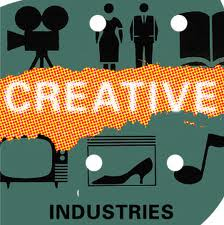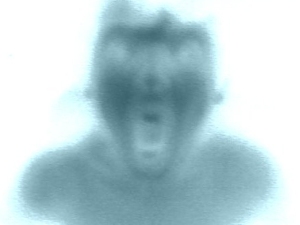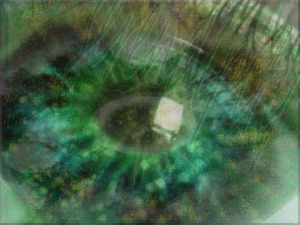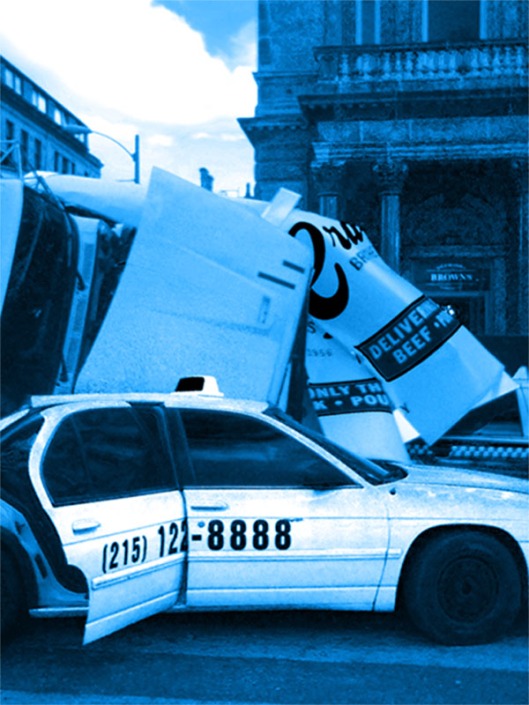Creative Industries Introduction
(Outcome 1)
Creative Industry Task
Force, discovering that this industry employed over a million people and 
contributed to around 4% of GDP. From
2001 to 2009 a an enormous amount of
papers, journals and reports were carried out to measure the health of this
industry and to insert them into social consciousness, these include the second
Department of Culture, Media and Sport Industries Mapping Report, London was
launched as Creative London in 2004, the Creative Economy Programme was
delivered from 2005-2007 and was subsequently adopted by the Government, then
the UN delivered their Creative Economy report in 2008.
The many technological advances made have been
the cornerstone to the success of the Creative Industries, whilst being
innovative they are able to adapt to change quicker than most sectors since
they all stem from the creation of ideas from individuals/groups and teams,
such small gatherings act as a task force to deliberate over the coming new
technologies by which could be used to great advantages, and so off they go
onto another revolution, from Internet to the Digital age they have adapted and
adopted such change and reflected upon British society ultimately enriching our
lives, we really would never be bored or have an excuse to be, again.
Essentially, The Creative Industry Sector in the United
Kingdom is an industry based upon the individual’s ability to create,
produce/manufacture their work and which has a potential for wealth creation
and a future capacity in generating employment through small to medium business
start-ups progressing further and contributing to the economy through this
process. ownership of intellectual property is big business but to you and me
it often translates as buying a game/song/painting/ or going to the theatre.
Creative Industry
incorporates a variety of trades all huddled under this umbrella heading and
they include Music, Fashion, Film, Publishing, Design, Television and Radio et
al and are not to be confused with a the neighbouring umbrella of Cultural
Industries and huddled under here include, Cultural Tourism & Heritage,
Museums, Libraries, Sports et al. One
may observe that they are similar in that they exist to enrich our lives but it
is how they do this that makes them different.
Cultural and Social
Wealth whereas the former deals more so with the creation of economic wealth. What’s the difference? Well it all relates back to ownership;
economic wealth is always owned by
someone, whether privately, publicly or individually; cultural wealth), it is
in cultural wealth that we can add value to our lives through the passing down
of history and in turn allowing us to identify with ‘the bigger picture’. Lastly social wealth deals with our
relationship to one another, how much we respect and care in genral in todays
fast pased modern world.
Through the education,
promotion and yes, exploitation, our culture is layed out for us all to see and
if we want, we can click, go, visit, call and see, all from the comfort of our homes
| Sector |
GVA at basic prices (£million) |
Proportion of total UK GVA (%) |
| 1. Advertising |
7,800 |
0.7% |
| 2. Architecture |
3,600 |
0.3% |
| 3. Art & Antiques |
300 |
0.03% |
| 5. Design |
1,600 |
0.2% |
| 6. Designer Fashion |
100 |
0.01% |
| 7. Film, Video & Photography |
2,700 |
0.3% |
9 & 10. Music & Visual and Performing
Arts |
3,200 |
0.3% |
| 11. Publishing |
10,100 |
1.0% |
| 8 & 12. Software & Electronic Publishing |
26,400 |
2.5% |
| 8 & 12. Digital & Entertainment Media |
200 |
0.02% |
| 13. TV & Radio |
3,200 |
0.3% |
| Total GVA for Creative Industries |
59,100 |
5.6% |
| Total GVA for all Industries |
1,053,9002 |
[1] |
Globally the Creative
Industry creates 4% of the world’s economic output. As the table above shows, each sector has
its own percentage of GVA however there are examples within the industry of
interfaces between sectors. For example,
no movie, TV show, game or otherwise creative output would create any
substantial social, cultural or economic value without the power of advertising
and publishing. Likewise, Digtial and
Entertainment Media really walk hand in hand with Music, Visual and Performing
Arts as well as TV, Radio, Film Video and Photography. It is the combination of such sectors that
amplify creative output to its maximum value, audience and meaning.
Advertising
(Outcome 2)
Statistics
Revenue £3Billion
Export £815Million
Employment 92,800
There is a lot more to
advertising than advertising. This
sector within the Creative Industry employs a vast array of talented
individuals, each a cog in the ultimate goal of creating an advertising
product. The many roles that would be
Marketing Executive, Market Researcher, Press Officer, Public Affairs
Consultant, Sales Promotion Account Services et al.
A Press Officer. “The job of a press officer is to be the
point of contact for a public or private agency to any media questions or
interest”[2], this
role is crucial in maintaining a positive image throughout the media through
press releases and grim board meetings and this in turn will filter to whom
uses this medium, for example, readers of The News Of The World 9you know who
you are) However, if say, an advertising
campaign was deemed to be inappropriate after consumer contact, it would be the
press officer that would liaise with the media to keep them up to speed with
what they intend to do about it, and the handling of this is crucial in keeping
a positive company image.
Cadbury: We all know and
sort of like their chocolate products.
When they decided to launch their ‘Get Active’ campaign back in 2003
they were met with a barrage of public and professional criticism; many
believed that they were shamefully promoting their chocolate to kids in a time
when obesity was quite an issue amongst them, Dr Wendy Doyle of the British
Dietary Association said: ‘We believe that it is sending out the wrong message
linking chocolate with health… misguided is a word I would use. Carmel Hogan, the press advisor for Cadburys,
“We recognised there would be a debate. We will continue to get the message out
– this is about kids getting active” Her role within this debacle was to guard
the image of Cadburys and diffuse any ill feelings in the media, one may say
she didn’t do so well at this; the campaign was abandoned six months after it
began, £9m wasted and Hogan quit a year later.
A Press Officer in this situation would have been key in diffusing the
situation, articulating facts and aiming to find a positive outcome. When all is plain sailing this role is ideal
in promoting the company within the media, advising current and future
projects.
The responsibilities of
undertaking any role within advertising are common to general employment; for
example, conducting business in a professional and respectful manner; polished
inter-personal skills, honesty and integrity; but what is needed in this
sector, like of those in other sectors in the Creative Industries, is discretion
and secrecy since the whole industry is based upon the ideas and creations of
individuals, trading information for money is essentially intellectual property
theft and will not be tolerated in any industry sector. This is truer for the self-employed
individual whom has more opportunity to do this through the many organisations
and businesses they liaise with.
The Advertising Sector
(Outcome 3)
Traditional advertising
such as those on the TV, radio newspaper and magazines recently saw a decline
at the end of 2009 by -10.1%, -11.7%, -18.7% and -14.8% respectively[3]. Companies are now becoming aware that there
is another media now that can deliver the message quicker and easier – through
the internet. The end of 2009 saw a
growth in internet advertising by 18.1%, through pop ups, banner ads, and the
increasing amount of junk mail that seems to be everywhere, it is no wonder
people are tuning in. With constant
connection with the consumer the advertising campaign came quickly seep through
a volume of people in no time, for example advertising campaigns can set up
Facebook profiles to allow users to ‘like’ and ‘follow’, with over 500 million
registered users, friends can quickly exchange data and the result is
limitless.
Customisation of consumer
related content has further allowed the advertisers to tailor advertisements to
an individual, increasing the success of product related behavioural change,
otherwise known as a sale. Not only this, advertisers have put the onus onto
the consumer in creating their ad through competitions whereby the winner will
get to star or part make the advert, and on a wider sense allowing the consumer
to identify better with the brand, a humanist approach as the companies are
striving to deliver messages in gear with consumers values and concerns, what
better way to do this than getting them involved.
Although again, the
advertising guys up there know how to get out of a toughie, they just slap
their logo onto whatever, the American TV show Survivor now comes with an ad on
the actual screen throughout the show.
Great.
Despite the often gross and
desperate lengths companies will go to simply to get their name on a screen;
does not mean that the Advertising Industry is not bound by law, by a code of
ethics and statutory controls. Indeed since
1955 when commercial TV began broadcasting, advertisers have been subject to
formal regulation in the claims they made, the first advert aired was for Gibbs
SR toothpaste (digital
viewers click here for the advert), and they were the
first to adhere to this. The Council of the Advertising Association (ASA) was
set up in 1961 to regulate the claims advertisers were making and exists to
this day, and recently “the ASA’s digital remit is extended to include
marketing communications on companies’ own websites and in other non-paid-for
space under their own control.”
Advertising for the
greater good is a modern affair, and shows its power in our culture and society
when informing us on say, the dangers of smoking; drink driving, drinking
alcohol; domestic and child abuse; and the recent ecological affairs of
deforestation and global warming; in this sense advertising for non-profit
making really encourages our society in bettering itself and I think primarily
on broadcasting, such advertisements should be limited to this, the internet
can then take the product related advertising where the consumer has the choice
to look and listen, without being co-arced or misled.
http://www.culture.gov.uk/advancedsearch.aspx?q=creative+industry&client=dcms&access=p&entqr=0&filter=0&output=xml_no_dtd&ie=UTF-8&site=default_collection
http://www.internsnetwork.org.uk/advertising-marketing/press-officer.html
http://en.wikipedia.org/wiki/Advertising#Rise_in_new_media







 EHPEMERAL
EHPEMERAL
